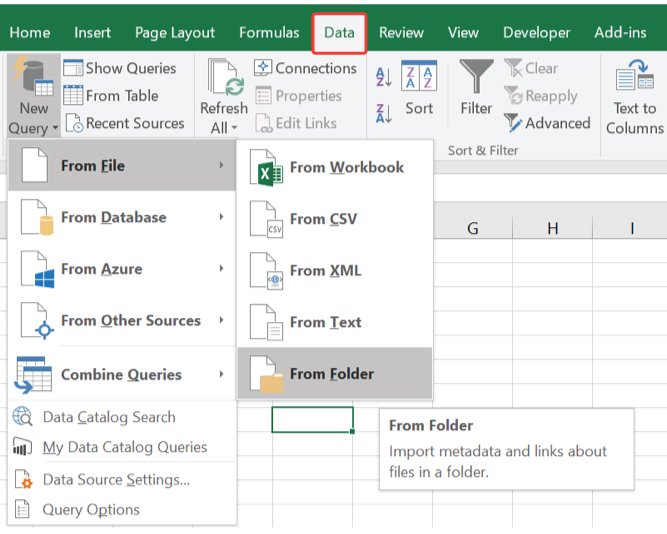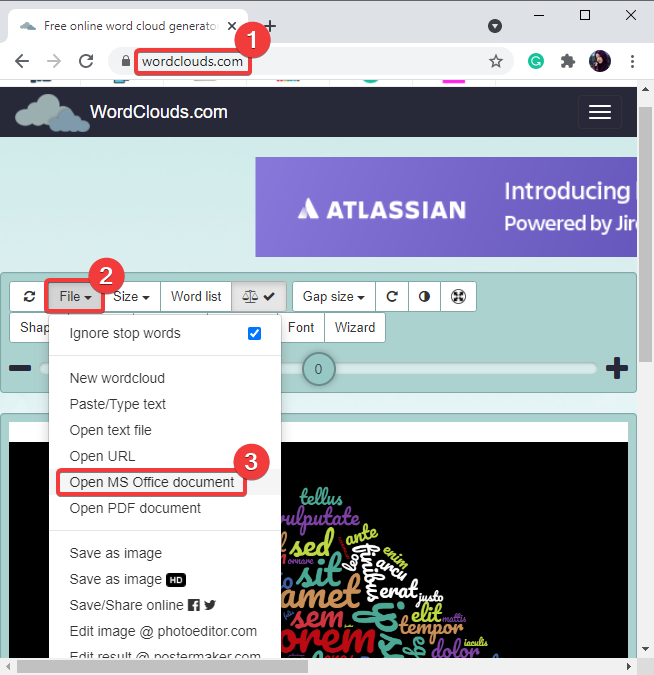Importing SecureCRT® Sessions from a Data File
- Excel For Mac How To Import Data From Folder To Excel Via Power Query
- Excel For Mac How To Import Data From Folder To Iphone
- Excel For Mac How To Import Data From Folder To Pdf
- Excel For Mac How To Import Data From Folder To Phone
- Excel For Mac How To Import Data From Folder Command
Step 1: Go to the DATA tab and click on From Text. Step 2: Now, it will ask you to choose the file location on the computer or laptop. Select the targeted file then, Click on Import. Step 3: It will open up a Text Import Wizard. Step 4: By selecting the Delimited, click on NEXT. Feb 16, 2021 To import CSV data into Excel with Power Query: Download the CSV file to your computer. Open a blank workbook in Excel and go to Data From Text/CSV. A preview of your CSV data loads in Excel: At the bottom of the preview window, you’ll see three options. Click Load to import the data directly to Excel.
You can find the Import Arbitrary Data From File To SecureCRT Sessions script discussed in this tip on the VanDyke Software Scripting Forum.
Introduction
SecureCRT sessions can be imported from an external source if you keep a list of the servers, routers, and other devices that you need to connect to saved in a .csv or other type of data file. With a data file, you can use a script to import the data into SecureCRT sessions, rather than manually creating them one at a time.
In this tip, we explain how to set up an example data file and provide an example script code for you to use and modify for your specific setup. You only need a few basic script-editing skills to get started (more extensive knowledge may be required to customize the example script to meet your needs).
The example script gathers information about your host machines from your .csv data file in order to create the .ini files that will become your SecureCRT sessions. There are comments within the script code explaining the expected format and organization of the data file. The comment lines in the script begin with a single character (a ' single quote or 'tick' character for VBScript and a # character for Python).
The following steps show you how you might use the techniques described in the script to generate sessions from your data file.
Setting up the data file
The first thing you'll need is a data file that contains the host information you wish to import into SecureCRT as sessions. The format below most closely matches the format that the script uses. If your data file only includes some of the information, simply make sure that the header line in your data file includes only those fields that the rest of your data file contains. The following is an example of what your data file might look like:
hostname,protocol,username,folder,emulation192.168.0.1,SSH2,root,Linux Machines,XTerm
192.168.0.2,SSH2,root,Linux Machines,XTerm
10.0.100.1,SSH1,admin,CISCO Routers,100,VT100
10.0.101.1,SSH1,admin,CISCO Routers,101,VT100
myhost1.domain.com,SSH2,administrator,Windows Servers/1st Floor,VShell
myhost2.domain.com,SSH2,administrator,Windows Servers/2nd Floor,VShell
myhost3.domain.com,SSH2,administrator,Windows Servers/3rd Floor,VShell
myhost4.domain.com,SSH2,administrator,Windows Servers/4th Floor,VShell

The first line of your data file names the fields used and their order. In the example above, the header line of the data file is the first line:
hostname,protocol,username,folder,emulation
The remaining lines in the data file are lines that have actual data to be imported, whereas the first line is simply a template that instructs the import script how to interpret the fields on each remaining line.
The example data file shown above uses a comma character as the delimiter between fields, but the script can work using a comma, space, semicolon, or tab as the delimiter. If your delimiter character is not a comma, simply modify the value of the g_strDelimiter variable in the script to match your specific delimiter character(s).
Note: The value of the emulation field must match a valid SecureCRT emulation option as displayed in the Terminal option in the Terminal / Emulation category of the Session Options dialog. However, the following protocols are not currently supported for import using this script: Serial, TAPI, and Raw.
The field keywords that the script is designed to recognize as valid header row components are as follows:
| session_name | The value that will be used for the session’s name. If this field does not exist, the hostname field is used as the session_name. |
| folder | A relative folder path for the specified session (not including the session name) as displayed in the Session manager. Any folder that does not exist will be automatically created as the script runs. |
| hostname | Required. The hostname or IP address for the remote server. |
| protocol | Required. The protocol to be used for connecting with the session (SSH2, SSH1, Telnet, or RLogin). |
| port | The port on which the remote server is listening. |
| username | Username for the account on the remote server. |
| emulation | The emulation (vt100, xterm, etc.). |
| description | Comment/description. Multiple lines are separated with r. |
You might have already noticed that the example data file above doesn't include a session_name field. When there isn't a session_name field, the hostname information will be used as both the hostname and the session name when importing.
Running the script
Once you have made the necessary configuration changes to your data file and/or the script, you can launch the script by opening up SecureCRT and choosing Run... from the main Script pull-down menu.
The first action the script will take is to prompt you for the location of your data (CSV) file.
Once you have specified which data file to use for importing session configurations, the script will attempt to create sessions using the information in your data file. After the work has been completed, the script will write information to a log file and display the contents of the log file.
For example:
After the script has completed, simply close SecureCRT's Session Manager and then open it again to see the sessions that were added.
Note: If a session was found to already exist, the imported session will have a time stamp appended to its name to avoid overwriting any existing sessions that have the same name.
Below we will look at a program in Excel VBA that reads data from a text file. This file contains some geographical coordinates we want to import into Excel.

Situation:
1. First, download the text file and add it to 'C:test'
Place a command button on your worksheet and add the following code lines:
2. We declare four variables. myFile of type String, text of type String, textline of type String, posLat of type Integer, and posLong of type Integer.
Excel For Mac How To Import Data From Folder To Excel Via Power Query

3. We need to initialize the variable myFile with the full path and the filename.
or
use the GetOpenFilename method of the Application object to display the standard Open dialog box and select the file (without actually opening the file).
Note: the empty part between the brackets means we give Excel VBA nothing as input. Place your cursor on GetOpenFilename in the Visual Basic Editor and click F1 for help on the arguments.
4. Add the following code line:

Note: this statement allows the file to be read. We can refer to the file as #1 during the rest of our code.
5. Add the following code lines:
LineInput #1, textline
text = text & textline
Loop
Excel For Mac How To Import Data From Folder To Iphone
Note: until the end of the file (EOF), Excel VBA reads a single line from the file and assigns it to textline. We use the & operator to concatenate (join) all the single lines and store it in the variable text.
6. Close the file.
7. Next, we search for the position of the words latitude and longitude in the variable text. We use the Instr function.
Excel For Mac How To Import Data From Folder To Pdf
posLong = InStr(text, 'longitude')
8. We use these positions and the Mid function to extract the coordinates from the variable text and write the coordinates to cell A1 and cell A2.
Range('A2').Value = Mid(text, posLong + 11, 5)
Excel For Mac How To Import Data From Folder To Phone
9. Test the program.
Excel For Mac How To Import Data From Folder Command
Result: